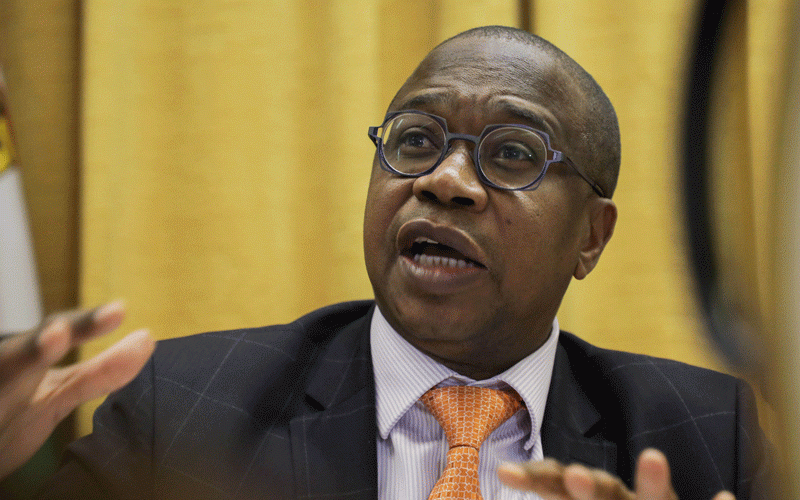
ZIMBABWE’S industries have slammed government for hiding crucial data around its controversial blended inflation, as they made a fresh appeal for authorities to swing back to Zimbabwean dollar consumer price index.
In a shock move in February, Finance and Economic Development minister Mthuli Ncube directed the Zimbabwe National Statistics Agency (Zimstat) to issue blended inflation, whose effect has been to present much lower rates.
It has given authorities an opportunity to gloss over effects of a blistering economic crisis highlighted by an imploding domestic currency.
Zimstat was also directed to stop publishing US dollar indexed inflation.
In coming up with a blended rate, government will use a weighted average of goods and services priced in Zimbabwean and US dollars.
But in a new analysis of annual inflation trends, the Confederation of Zimbabwe Industries (CZI) warned about distortions stemming out of the new strategy.
“Generally, there are about four developments that can explain a change in blended inflation rate - Change in US dollar inflation rate, change in Zimbabwean dollar inflation rate, changes in the weights being applied for USD and Zimbabwean dollar inflation in blending (or) a combination of all the three,” CZI said in a paper titled ‘Macroeconomic Briefing Note to CZI Members’.
The paper demonstrated that despite authorities’ attempt to manipulate data, month-on-month blended inflation surged in March, reaching 0,1%, compared to -1,6% in February.
- Mthuli Ncube abandons struggling consumers
- Fears of jobs carnage as crisis deepens
- Fresh warning over bank rate hikes
- Police admit that money changers are untouchable
Keep Reading
But blessed annual inflation slowed to 87,6% during the period, dropping 4,7 percentage points from 92,3% in February.
“Currently, Zimstat does not make public any of these besides publishing a blended rate, so it remains a guessing game as to what might have caused the movement,” CZI said.
“With the parallel market rate increasing significantly in March, it is likely that the increase was caused by an increase in Zimbabwean dollar inflation.
“Since blended inflation is a composite number, whose components are difficult to figure out, it is also difficult for business to make any use of the blended inflation,” CZI said.
Both figures were a far cry from 229,8% in January and 243,8% at the end of last year.
“Business is desperately looking for some estimates about inflation rates of the currency in use (that is USD and Zimbabwean dollar), which they have been currently denied by the authorities,” the report notes.
“This is largely because there are some key decisions that are calling for the use of inflation for which the blended rate is proving to be inadequate.
“A look at the trends since November 2021 shows that the Total Consumption Line (TCL) inflation and the annual inflation are closely related.
“Specifically, annual inflation was on average about 17,6 percentage points lower than the TCL inflation, or about 89,8% of the actual value of the TCL inflation.
“Based on the TCL inflation level of 206,7% for March 2023, the actual Zimbabwean dollar inflation for Zimbabwe in March could have been anywhere between 185% and 189%.
“This means that controlling the Zimbabwean dollar inflation is still a battle far from won by the authorities,” the report further states.
In February, the CZI warned that Mthuli Ncube’s decision — the third such move in about 15 years — would have grave consequences on the frail economy.
It argued that financial statements were being prepared in Zimbabwean dollars, which is the base currency.
“US dollar is now the dominant currency in Zimbabwe’s money supply and over 75% of spending is now in the US dollars,” the CZI said in February.
“As the proportion of US dollar expenditure continues to increase in the Zimbabwean economy, blended inflation will be under control, since the US dollar is a stable currency.
“However, blended inflation is of no significant use for economic agents, who are holding Zimbabwean dollars and US dollars and want to make decisions on what to do with the holdings. It is prudent for Zimstat to publish inflation figures separately as Zimbabwean dollar and US dollar inflation, as this would go a long way in business planning for the future.
“As a result of SI 27 of 2023, for February 2023 only the blended inflation rate was reported by Zimstat. This was totally unanticipated and has serious negative implications on the economy.
“In general, all statistics, including inflation rate, are published so that they are used in different areas by stakeholders,” the CZI said.
It said for households and consumers, the key factor was the proportion of their income that they earn in the two currencies.
“For households and consumers to be able to tell whether the value of their incomes is increasing or decreasing they need to know the inflation rate of each currency in isolation,” CZI said.
“For accounting purposes, International Accounting Standard 29 requires that all businesses with the Zimbabwean dollar as their functional currency publish inflation adjusted accounts and this will require an official Zimbabwe dollar inflation rate.”










